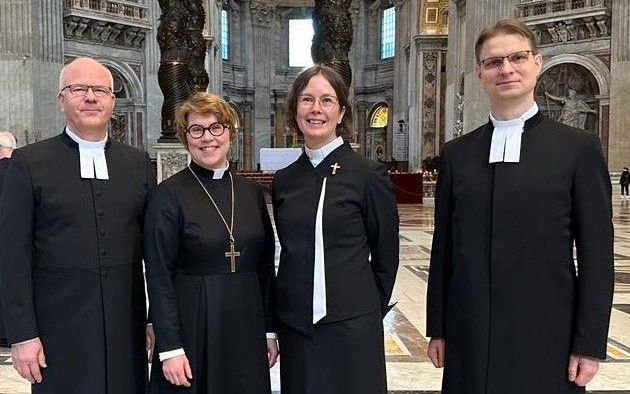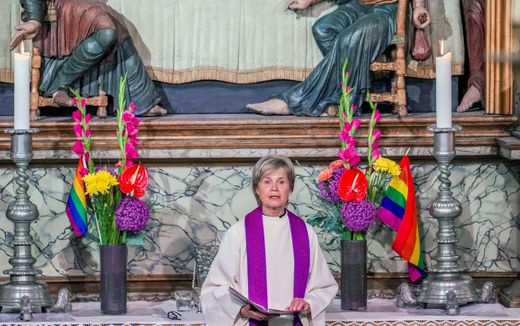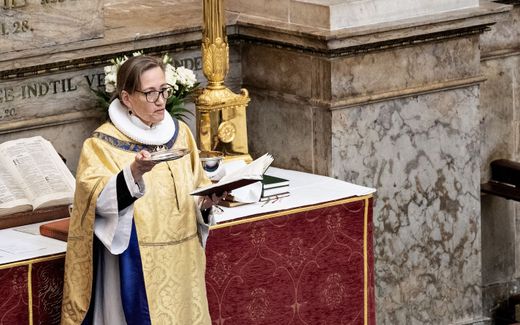Finnish church goes for gender-neutral clothing for priests (M/F)

The official dress for male and female priests in the Finnish church differs. From now on, there comes more freedom for priests to wear the same garments. Photo EVL; Evangelical Lutheran Church in Finland
Northern Europe
The Finnish Lutheran Church has stopped prescribing particular male and female garments for priests. But no one has to buy new clothes. “Everyone can choose the most natural clothing for them,” says the bishops’ secretary.
It is still important that a priest can be recognised as a church representative. The dress code is there to give recommendations for how priests in ministry should be dressed; in daily life, on solemn occasions and in church services.
The Bishops’ Conference in Helsinki has updated this directive. The update increases the freedom of choice in the way priests dress. Both the Finnish Seurakuntalainen as the Swedish Kyrkanstidning report this.
The new instruction allows the priest to choose the one he or she considers most natural from among the instructed dress options. The starting point for dressing is that the priest is always recognisable as a priest when performing his duties. The appendix to the instructions clarifies how the priest’s dress code is followed in practice.
Survey
Last year, the bishops surveyed the use of the uniform. From that, it became clear that many of the respondents did not consider it appropriate to define gender in official dress. For that reason, it has disappeared in the update.
“The instructions for the priests’ official dress give greater freedom of choice. Gender no longer determines how a priest can dress. Still, everyone can choose the most natural clothing for them”, says Anna-Kaisa Inkala, the theological secretary of the bishops’ meeting.
She says the bishops’ meeting held a long debate on the issue before the meeting could decide.
Changes
It is not clear whether this update will result in visible changes. Anna-Kaisa Inkala believes that the new dress codes will lead to more women choosing the kaftan (robe). But no one needs to buy any new clothes to be able to follow the instructions.

Inkala: “The Evangelical Lutheran Church in Finland has long issued instructions on how priests should dress. However, guidelines have always been only recommendations, not regulations. The priest must be identified as a priest by his clothes. Clothes also promote the cohesion of the clergy.”
The priests have never been obliged to follow the recommendations. But according to Anna-Kaisa Inkala, all priests in the Evangelical Lutheran Church in Finland are expected to follow the instructions. Still, there are no specific measures if they do not. However, the bishop can give further instructions if he thinks that necessary.
Sweden
The Swedish church magazine Kyrkans Tidning adds that the Lutheran Church of Sweden does not have regulations for this, according to Anders Blomquist, a teacher in liturgy at the seminary. Instead, the dioceses have rules that govern how the priest’s uniform looks.
In some Swedish dioceses, the regulations are gender-specific, with one instruction for men and another for women. In other dioceses, the instruction is gender-neutral. Anders Blomquist says that priest students are recommended to wear the priest’s shirt with the recognisable collar. “It reminds us that we are in service, in the service of the congregation. It is appropriate to have it because it is an identification. As a priest, you are part of an office; I think you should wear the priest’s shirt. This is how you see that we are priests”, says Anders Blomquist.
Germany
In the Lutheran Church (EKD) in Germany, clerical dress is also a matter for the regional churches. A few weeks ago, a question about this was asked on Evangelisch. In most churches ministers wear black robes (gowns) with collars and berets as official attire. There is no difference between male and female clothing. During services, ministers can choose to wear the colours that fit into the liturgical season, like Advent or Passiontide.
Related Articles









